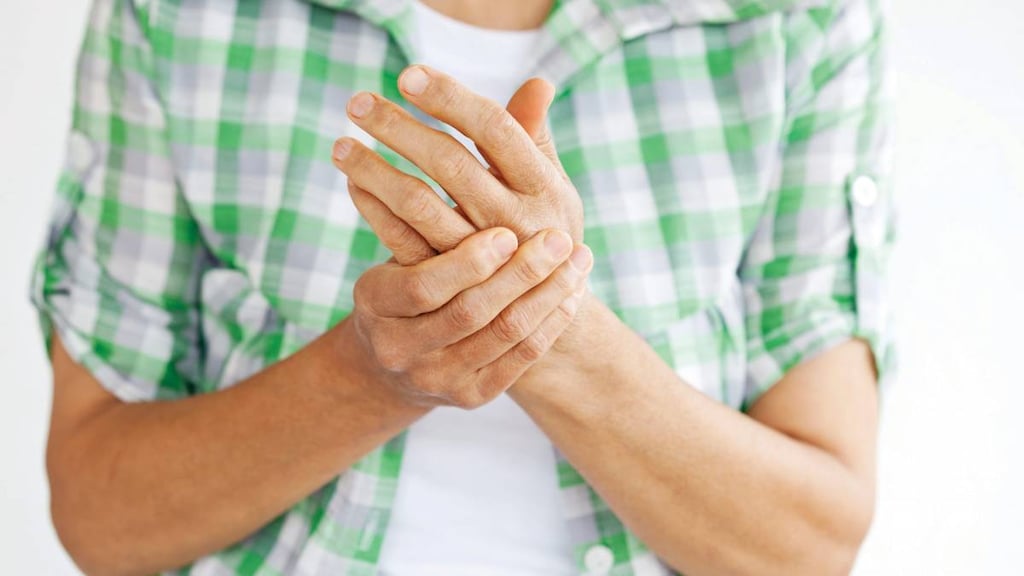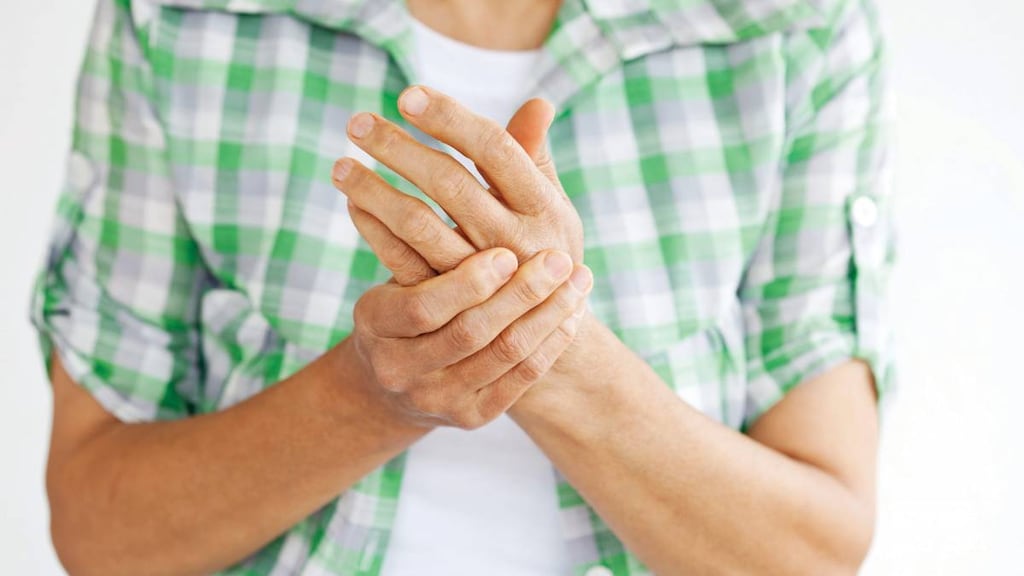
Perhaps your back feels stiff and painful when you wake up in the morning. Or your swollen knees have started to interfere with your daily activities. You may have arthritis.
Arthritis treatment combines medications, non-drug treatments, rest, exercise, lifestyle modifications, and sometimes surgery. This approach can help many people with arthritis to relieve their discomfort and lead normal lives.
What is arthritis?
Arthritis is a term used to describe conditions that lead to inflammation of the joints and surrounding tissues.
The word arthritis is derived from the Greek word arthron (joint) and the suffix -itis (inflammation). For people who have arthritis, the word variously signifies the pain, swelling, redness, and heat that may be caused by tissue injury or disease in the joint.
The most common type of arthritis is osteoarthritis. It is also called “degenerative joint disease” because it results from the deterioration of the cartilage in the joints.
The second most common type of arthritis, rheumatoid arthritis, is an inflammatory disease that affects the lining of multiple joints, especially in the hands and feet.
Other rheumatic diseases—gout, ankylosing spondylitis, reactive arthritis, psoriatic arthritis, enteropathic arthritis, and infectious arthritis—are also characterized by joint inflammation.
A closer look at your joints
Joints are places where bones meet.
The human body contains two main types of joints: synovial joints and cartilaginous joints.
Synovial joints are freely movable joints, such as the wrists, elbows, shoulders, ankles, knees, and hips.
Synovial joints take their name from the synovium, which is the tissue that lines the joint. The synovium produces synovial fluid that lubricates the joint to allow free movement.
Cartilaginous joints consist of a tough and somewhat elastic tissue called cartilage. Examples include the joints that connect the vertebrae in the spine and those that connect the ribs to the breastbone. They are designed to limit movement to provide stability in key areas of the body such as the back and chest.
Some types of inflammatory arthritis, such as rheumatoid arthritis, are more likely to affect the synovial joints. In other types of inflammatory arthritis, the cartilaginous joints, especially the spine, are the primary targets.
What are the symptoms of arthritis?
The symptoms of arthritis vary depending on whether a person has the degenerative or inflammatory form of the condition.
Degenerative arthritis
Osteoarthritis results from degeneration in the joints. It is a painful disease that often involves the hips, knees, neck, lower back, or small joints of the hands. As the cartilage that cushions the ends of the bones in the joint thins and wears away, the bones rub together. Joint flexibility is reduced, bony spurs develop, and the joint swells.
Inflammatory arthritis
Rheumatoid arthritis is an autoimmune inflammatory disease that usually involves multiple joints. In rheumatoid arthritis, the immune system destroys the linings of joints. This causes pain, swelling, stiffness, and reduced movement and function.
People with rheumatoid arthritis also may have additional symptoms such as fatigue, fever, and weight loss.
Other types of inflammatory arthritis have specific symptoms associated with those conditions.
Gout and infectious arthritis
Some types of inflammatory arthritis are caused by an irritating substance or germ getting into one or more joints.
Gout
In gout, crystals of uric acid are deposited in the joints, where they cause inflammation.
At first, gout may only affect one joint, which becomes red, swollen, and extremely tender to the touch. Over time, multiple joints may be affected. Uric acid crystals can collect in the joints or tendons, under the skin, or outside the ears.
Attacks of gout may be treated with nonsteroidal anti-inflammatory drugs (NSAIDs), corticosteroids, or a drug called colchicine.
Your doctor may also prescribe medication to reduce uric acid in the body together with a medication to prevent gout attacks.
Infectious arthritis
Infectious arthritis also may have additional symptoms such as fatigue, fever, and weight loss. Other types of inflammatory arthritis have specific symptoms associated with those conditions.
Infectious arthritis occurs when a germ gets into a joint. The result is inflammation that leads to pain, swelling, and inability to move the joint.
Bacterial and fungal infections can cause severe joint damage.
Hospitalization is usually necessary so you can receive intravenous (IV) antibiotic or antifungal therapy. You may also need surgery to drain the infected joint.
Viral infections usually do not cause joint damage. Most viral infections will go away on their own.
Spondyloarthritis
Spondyloarthritis is a general term for inflammatory diseases that involve both the joints and the sites where the ligaments and tendons attach to the bones.
In most cases, spondyloarthritis primarily affects the spine. Some forms can also affect joints in the hands, feet, arms, and legs.
Ankylosing spondylitis
Ankylosing spondylitis usually affects the lower back first. Back pain and stiffness begin in the sacroiliac joints between the spine and the pelvis and work their way up. Eventually, the disorder can affect the entire spine. Other joints, such as knees and ankles, can be inflamed as well.
With time, bones of the spine can fuse or grow together, causing an extremely stiff, rigid backbone. This may make it difficult to expand the chest to take a deep breath.
Almost any movement can become extremely painful.
Psoriatic arthritis
Psoriatic arthritis is a chronic disease in which a person with a skin condition known as psoriasis develops joint pain, stiffness, and swelling.
Symptoms of psoriatic arthritis include:
- A pink or dull-red, scaly skin rash occurring in patches, especially on the back of the arms, front of the legs, and scalp
- Inflammation of the joints, especially in the fingers, toes or spine
- Morning joint stiffness
- Lower back pain
Frequently, the arthritis is accompanied by inflammation of tendons and the spots where tendons attach to bones, such as in the heel or fingers.
Reactive arthritis
Reactive arthritis causes inflammation of the joints and often involves the urinary tract and eyes as well. The immune system responds to an infection but continues attacking the body after the infection is gone.
The inflammation begins abruptly and usually affects one or several joints, especially the knees, ankles, or feet.
People may develop pain from inflammation of tendons where they attach to bone, such as the back of an ankle or in the heel.
Enteropathic arthritis (arthritis associated with inflammatory bowel disease)
Inflammatory bowel disease (IBD) is marked by inflammation of the intestinal tract. Some people with IBD develop a form of arthritis.
Arthritis associated with IBD tends to involve pain, swelling, and stiffness in a few, large joints including those in the lower spine. Often, but not always, joint symptoms come and go together with bowel symptoms.
Medications
The most important goals in treating arthritis are maintaining your ability to move and function, reducing pain, and preventing future joint damage.
Medications that relieve symptoms
Some of these drugs only relieve pain. Others dampen inflammation in addition to providing pain relief. But none of them stops disease from getting worse.
- Topical pain relievers. Topical pain relievers are applied to the skin for relief of mild pain. They are available by prescription and over the counter.
- Acetaminophen. Over-the-counter acetaminophen can relieve mild to moderate pain. It is easy on the stomach and kind to the kidneys. But if the recommended dose is exceeded, it can cause liver damage.
- NSAIDs. NSAIDs relieve pain. They also reduce inflammation that contributes to pain, swelling, and stiffness. There are two types of NSAIDs: non-selective NSAIDs and selective COX-2 inhibitors. COX-2 inhibitors tend to cause less stomach and intestinal irritation. Both types are associated with an increased risk of heart disease and can potentially damage the kidneys.
- Corticosteroids. Prednisone and similar drugs decrease inflammation. They may be taken as a pill or injected into a joint. They have many potential side effects.
Disease-modifying antirheumatic drugs (DMARDs)
DMARDs alter the function of your body’s immune system. They can reduce or prevent joint damage and preserve joint function in many types of inflammatory arthritis. They also provide good symptom relief and allow many people to maintain normal or near-normal function. As with all drugs, they have possible side effects, some serious.
- Nonbiologic DMARDs. Nonbiologic DMARDs, such as methotrexate, help to suppress the body’s overactive immune system, which reduces inflammation. You may not feel the full effect of these drugs for several weeks.
- Biologic DMARDs. So-called “biologics” are created from proteins. They block specific steps in the process of inflammation. This group includes drugs known as TNF inhibitors as well as biologics that have other modes of action.
- JAK inhibitor. A Janus kinase (JAK) inhibitor blocks an enzyme involved in inflammation.
Many DMARDs increase the risk of infection and certain cancers. It is important that you tell your doctor about all your present and past medical problems prior to starting one of these drugs. Your doctor will test you for certain infections for which you may not have symptoms, such as hepatitis and tuberculosis.
Surgical treatments
Surgery may be needed to treat severe arthritis that does not respond to medications.
Surgical procedures may be performed to remove inflamed tissue, or to reconstruct or replace a significantly damaged joint.
Joint replacement surgery
Joint replacement surgery removes a damaged joint and replaces it with a new, artificial joint. This surgery is a treatment option for many forms of arthritis. You may consider it if your symptoms are severe and your joint is badly damaged.
The knee and hip joints are most often replaced. Ankle, wrist, shoulder, and elbow joints can also be replaced, but this is much less common.
A new joint should allow you to return to normal activities again and significantly relieve your pain.
Lifestyle modifications
Lifestyle modifications can help to relieve pain and improve function.
Exercise and physical activity
Being active tends to reduce symptoms. But it is important to balance exercise with rest. When symptoms flare up, take it easy.
When your joints feel better, increase your activity. Swimming or other water-based exercises, biking, and walking are all good options. Avoid activities, like jogging, that could put too much stress on your joints. If exercise results in more pain or joint swelling, cut back a bit.
A physical therapist can develop an exercise routine that helps strengthen your muscles and improve joint function.
Assistive devices
A splint, brace, sling, cane, or shoe insert can take pressure off the joints and protect them from injury.
Heat therapy
Heat makes pain more tolerable and relaxes muscles. Take a warm bath or shower or apply a heating pad set at a low temperature.
Massage therapy
Massage therapy may help relieve pain and relax tight muscles.
Adjust your routine to protect your joints
Simple adjustments can help you protect your joints.
Not using arthritic joints enough, overusing them, or using them incorrectly can all worsen pain and swelling and cause additional joint damage.
Tips to protect your joints
These strategies can help you avoid stiffness and unnecessary stress on joints:
Avoid holding one position for too long.
- Get up and stretch every 15 minutes when reading, watching TV, or working at your desk.
Modify tasks to ease the workload on your joints.
- For example, if opening tight lids is difficult, purchase a wall-mounted jar opener.
Use your strongest joints and muscles.
- To protect finger and wrist joints, push open heavy doors with the side of your arm or shoulder. To reduce hip or knee stress on stairs, lead with the stronger leg going up and the weaker leg going down.
Prevent falls, which can further damage your joints and cause disability.
- Remove throw rugs.
- Place a suction mat and grab bar in the bathtub. Use night lights in the bedroom, hallway, and bathroom.
- Make other home modifications. Put a bathing stool in the tub or shower.
Make use of helpful gadgets
Simple gadgets and devices can make it easier to perform daily activities.
In the kitchen
- mini chopper
- electric can opener
- utensils with built-up, padded handles
- faucet handles that can be turned with the arm, wrist, or heel of the hand
In the bathroom
- electric toothbrush
- raised toilet seat
- grab bars in the bathtub or shower
In the bedroom
- slip-on shoes
- clothing with elastic waistbands, large buttons,
- Velcro fastenings, and zipper pulls
Throughout your home
- doorknob turners
- lightweight vacuum cleaner
- voice recognition software for your computer
Many people with arthritis suffer from fatigue. Staying active improves general health and maintains strength and range of motion. But it’s just as important to rest when you’re tired. Spread heavy and light chores throughout the week. Take naps. Listen to your body. See your doctor.
Talk with your doctor
Whether this is your first visit or a follow-up, ask your doctor:
- What type of arthritis do I have?
- What should I expect in terms of symptoms?
- Will my condition worsen over time?
- What are my drug treatment options?
- Will these medications improve my symptoms? Will they slow, stop, or reverse the progression of my condition?
- What non-drug treatments can help relieve my symptoms?
- Will exercise improve my symptoms? What types should I do?
- Do you think I would benefit from surgery?
Tell your doctor if:
- Your symptoms have changed (for better or worse) since your last visit
- You have had to increase the amount of pain medication you take
- You think your medications are causing any side effects
- You are using any alternative or complementary therapies




